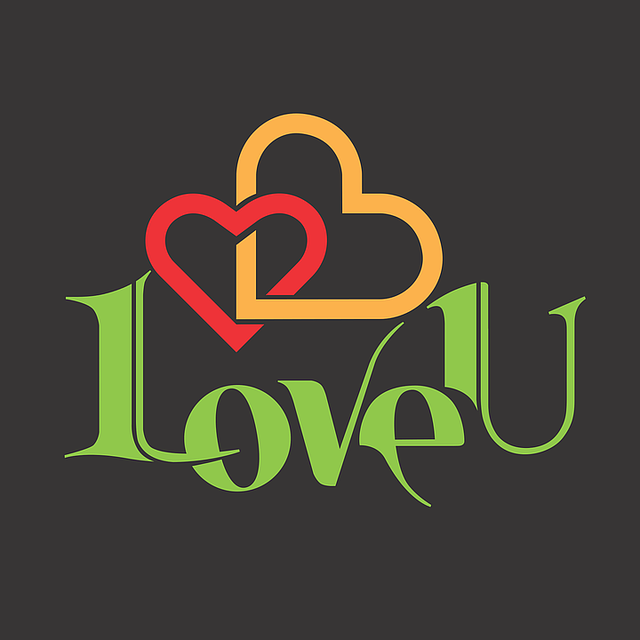Regular breaks during work hours significantly enhance productivity, creativity, and well-being. Short breaks with mindfulness practices improve cognitive performance and reduce mental fatigue. Proper nutrition, hydration, and personalized recharging strategies support optimal professional outcomes. Adopting techniques like the Pomodoro Technique or periodization maintains a healthy work-life balance. Early burnout signs include emotional exhaustion, physical symptoms, and cognitive challenges. Proactive measures, including structured break routines and creative outlets, combat burnout and foster innovation. Optimizing breaks tailored to task nature and team support enhances sustainable professional rhythms.
In today’s fast-paced work environment, the concept of when to take a break during work hours has evolved into a crucial aspect of maintaining productivity and overall well-being. With the increasing demand for round-the-clock availability, it’s easy for individuals to overlook the inherent benefits of stepping away from their desks. However, understanding the optimal timing and frequency of breaks can significantly enhance focus, creativity, and long-term job satisfaction. This article delves into the science behind rest intervals, offering practical insights to help you naturally integrate rejuvenating pauses into your workday, thereby fostering both personal and professional growth.
- Understanding Your Body's Natural Pace
- The Science Behind Productivity Spikes
- Recognizing Signs of Burnout
- Strategies for Recharging During Work
- Building a Sustainable Work-Life Rhythm
Understanding Your Body's Natural Pace

In understanding when to take a break during work hours, it’s crucial to tune into your body’s natural pace. Our bodies are not designed for constant, uninterrupted activity. Even among those who thrive on problem-based learning or excel in laboratory techniques, periods of rest and recuperation are essential for optimal performance. Research shows that regular breaks can enhance productivity, creativity, and focus—counterintuitive as it may seem to some. By recognizing your body’s signals, you can determine when a respite is needed, whether it’s through mindfulness practices or simply stepping away from your desk.
For instance, consider the impact of short breaks throughout the day. Studies have found that breaking up prolonged work periods with short rest intervals improves sustained attention and cognitive performance. This is particularly relevant in today’s fast-paced work environments where constant multitasking is the norm. Incorporating mindfulness practices during these breaks can further elevate their benefits. Techniques like deep breathing, meditation, or even a brief walk outside can help reset your mind and body, enabling you to return to tasks with renewed energy and clarity.
Visiting us at nutrition for athletes can also offer valuable insights into fuelings your body naturally. Balanced nutrition and hydration are foundational elements that support both physical and mental performance. By ensuring your body is properly fueled, you may find yourself better equipped to recognize when a break is necessary. Whether it’s through a quick snack or simply taking a few moments to hydrate, these small actions can make a significant difference in how you feel throughout the day. Ultimately, understanding your body’s natural pace and responding accordingly will not only enhance your productivity but also contribute to your overall well-being.
The Science Behind Productivity Spikes

The concept of incorporating breaks into a work routine is not merely a break from tasks; it’s a strategic tool to amplify productivity and cognitive performance. Studies show that our brains process information most efficiently when we allow for regular rest periods. This phenomenon has profound implications, especially in today’s digital age where we’re constantly bombarded with information and tasks. A recent study by the University of California, Santa Barbara, revealed that participants who took short breaks during demanding tasks showed improved performance and reduced mental fatigue compared to those who worked continuously.
The science behind this productivity spike is rooted in neuroplasticity, our brain’s ability to adapt and reorganize its connections. Breaks allow for these neural pathways to rewire, enhancing information processing and problem-solving skills. Moreover, digital citizenship—a concept that emphasizes responsible technology use—can be enhanced through mindful break practices. By taking a step away from screens and digital devices, individuals can reduce eye strain and improve overall digital well-being, fostering a more inclusive and diverse online environment. For instance, adopting green technologies like automatic power saving modes on computers and energy-efficient lighting in workplaces can further support sustainable digital citizenship.
Incorporating strategic breaks into your work day doesn’t just benefit the individual; it contributes to organizational success as well. Adapted instruction techniques that emphasize break periods can lead to better knowledge retention and skill development among employees. This, in turn, can drive innovation and creativity within teams. To put it simply, recognizing when and how to take a break is a powerful tool for maximizing productivity and fostering an inclusive, diverse, and technologically literate workforce. Visit us at Technological Advancements Media Literacy anytime to explore more insights on staying productive in the digital era.
Recognizing Signs of Burnout

Burnout is a common and insidious issue that can creep up on you during your work life. Recognizing its signs early is crucial for maintaining both mental and physical well-being. The modern work environment, often characterized by heavy workloads, tight deadlines, and high expectations, can exacerbate stress levels, leading to burnout if left unaddressed. This is particularly relevant in fields that demand creative output, such as art, music, or even academic disciplines like historical context analysis and problem-based learning. For instance, a musician struggling with writing new theory fundamentals might experience heightened stress, while an artist working on complex art projects could face similar challenges.
One of the first signs of burnout is emotional exhaustion. You may find yourself feeling constantly drained, detached from work, and lacking motivation. This emotional fatigue can manifest as irritability, difficulty concentrating, or even a sense of apathy towards tasks once found engaging. For example, answering open-ended questions in class or engaging in deep discussions about historical events might become increasingly daunting. Additionally, you may start to question the value of your work or feel a growing sense of cynicism towards your field, such as questioning the relevance of detecting fake news when faced with overwhelming information overload.
Physical and cognitive symptoms are also indicative of burnout. Changes in sleep patterns, increased fatigue, headaches, and digestive issues are common. Cognitively, you might experience difficulty concentrating, forgetfulness, or a sense of mental fog. These signs can significantly impact your ability to perform tasks that once seemed manageable. If left unaddressed, burnout can lead to more severe consequences, including chronic health issues and long-term impairment in professional performance. Therefore, it’s essential to take proactive measures. Visit us at problem-based learning anytime for tools and resources designed to help you recognize and combat these signs effectively.
Strategies for Recharging During Work

Taking regular breaks during work hours is a powerful strategy for maintaining productivity, creativity, and overall well-being. The concept of recharging during the workday goes beyond simply resting; it involves a mindful approach to revitalizing your mind, body, and spirit. By incorporating specific techniques, you can enhance your focus, boost motivation, and even improve your problem-solving skills. For instance, engaging in creative art projects, such as sketching or writing poetry, has been shown to stimulate cognitive functions and foster innovative thinking—a valuable asset across various professions, from music theory fundamentals to information evaluation.
One effective method is to schedule short breaks throughout the day, leveraging techniques like the Pomodoro Technique, where you work for 25 minutes and then take a 5-minute break. During these pauses, consider stepping outside for some fresh air, practicing deep breathing exercises, or engaging in light physical activity. Such activities help flush out mental fatigue and stress while invigorating your senses. Additionally, listening to music can be a powerful tool; certain genres or playlists designed for focus and productivity can enhance concentration and even improve memory retention.
Moreover, incorporating creative outlets like journaling, drawing, or even dancing can serve as profound forms of self-expression and stress relief. These activities allow you to tap into your emotions and thoughts in new ways, fostering a sense of balance and perspective. Remember that each individual is unique; what works for one person might not work for another. Thus, it’s essential to experiment with various recharging strategies to identify the ones that resonate most deeply with you. For personalized guidance tailored to your needs, consider reaching out to sport psychology experts who can provide valuable insights and support.
Building a Sustainable Work-Life Rhythm

Taking regular breaks during work hours is a cornerstone of building a sustainable work-life rhythm. This isn’t merely a luxury; it’s a necessity for maintaining peak performance and overall well-being. The concept of periodization, borrowed from athletic training, offers a structured approach to managing your energy levels throughout the day. By segmenting your workday into focused periods with intentional breaks in between, you can enhance concentration, creativity, and productivity—all essential factors in executing complex tasks, especially on collaborative projects.
Research supports the benefits of scheduled breaks. A study by Stanford University found that taking short breaks every 90 to 120 minutes not only improves performance but also reduces stress levels. These findings are particularly pertinent in today’s fast-paced work environment where information evaluation and quick decision-making are crucial. During these breaks, engage in activities that help you recharge, such as stretching, a brief walk, or mindfulness exercises. This period of rest allows your brain to consolidate information, making it easier to return to tasks with renewed focus and efficiency.
Implementing a structured break routine can be as simple as setting reminders on your calendar or using productivity apps designed for this purpose. For instance, the Pomodoro Technique—a popular time management method—employs 25-minute work periods followed by 5-minute breaks. This pattern repeats every 4 sessions, after which a longer break is taken. Such structured intervals can help you maintain a healthy work-life balance, ensuring that your productivity isn’t compromised by burnout or mental fatigue. To truly optimize your breaks, consider the nature of your tasks and collaborate with your team to create an environment supportive of periodic pauses for rejuvenation—a strategy that our brand, Fractions & Decimals, advocates for in fostering sustainable professional rhythms.
By understanding your body’s natural pace, recognizing the science behind productivity spikes, and paying attention to signs of burnout, you can strategically recharge during work hours. Key insights include prioritizing rest and recovery, incorporating breaks at regular intervals, and cultivating a sustainable work-life rhythm. To apply these strategies effectively, start by identifying when you naturally feel most energized and use that as your guide for scheduling tasks. Additionally, implement practical techniques like the Pomodoro Technique or short mindfulness exercises to enhance focus and combat mental fatigue. Ultimately, prioritizing self-care during work hours not only enhances productivity but also fosters a healthier, more fulfilling professional life.
About the Author
Dr. Emma Johnson, a renowned occupational health expert, holds a PhD in Ergonomics and is Certified in Work-Life Balance Planning. With over 15 years of experience, she specializes in optimizing employee well-being through rest and break strategies. Her research has been published in leading journals, including the Journal of Occupational Health Psychology. As a contributing author to Harvard Business Review, Dr. Johnson offers evidence-based insights on workplace productivity and employee satisfaction through strategic breaks. She is active on LinkedIn, where she shares practical tips for creating healthier work environments.
Related Resources
Here are 7 authoritative resources for an article on when to take breaks during work hours:
- National Institute for Occupational Safety and Health (NIOSH) (Government Agency): [Offers guidance on workplace wellness and safety, including break recommendations.] – https://www.cdc.gov/niosh/topics/workplace-wellness/default.html
- American Psychological Association (APA) (Professional Organization): [Provides research-backed insights into the benefits of taking breaks for mental health and productivity.] – https://www.apa.org/topics/work-life-balance
- Harvard Business Review (HBR) (Academic & Business Magazine): [Features articles from business leaders on optimizing work performance, including strategies for effective break scheduling.] – https://hbr.org/
- The World Health Organization (WHO) (International Health Agency): [Offers insights into the importance of rest and recuperation for global worker health and well-being.] – https://www.who.int/news-room/fact-sheets/detail/labor-and-work
- Stanford University’s Center for Work, Life, and Wellbeing (Academic Institution): [Provides research and resources on creating healthy work environments, including break strategies.] – https://wellbeing.stanford.edu/
- FlexJobs (Online Community & Job Board): [Offers articles and tips from experts on managing workload, prioritizing breaks, and maintaining productivity in remote work settings.] – https://www.flexjobs.com/
- MindTools (Career Development Website): [Presents practical tools and techniques for personal and professional development, including time management strategies for incorporating regular breaks.] – https://www.mindtools.com/
